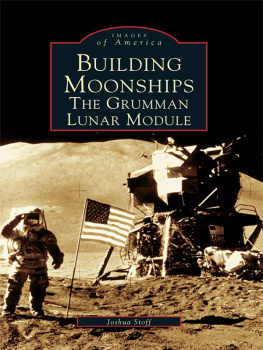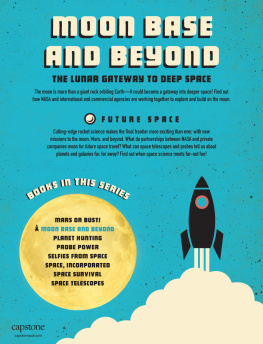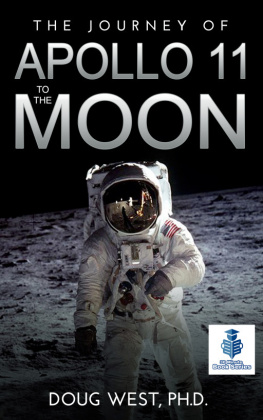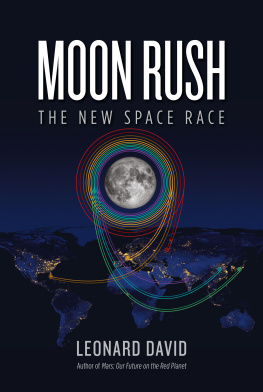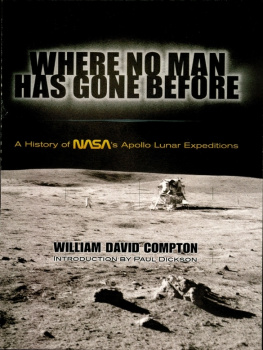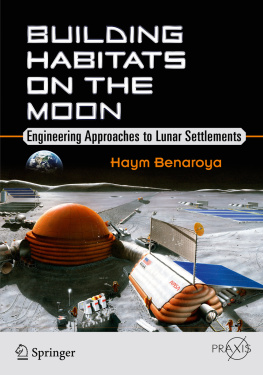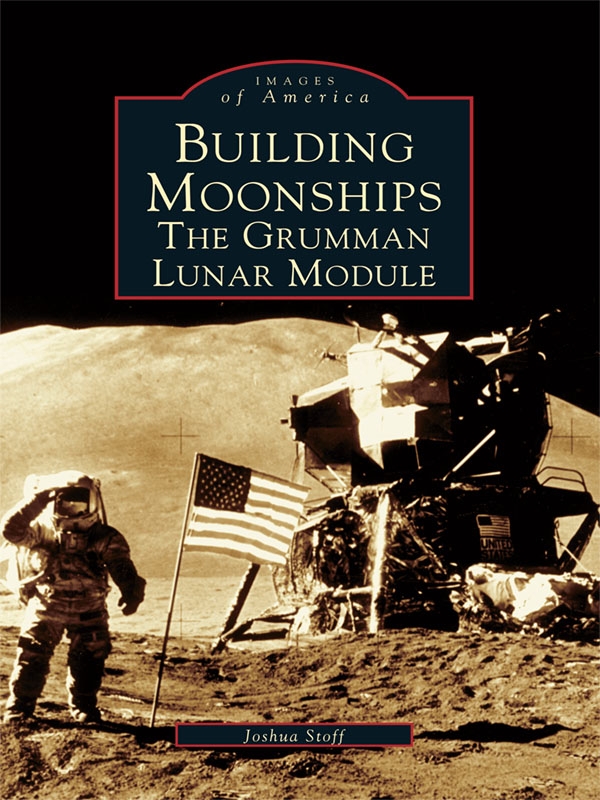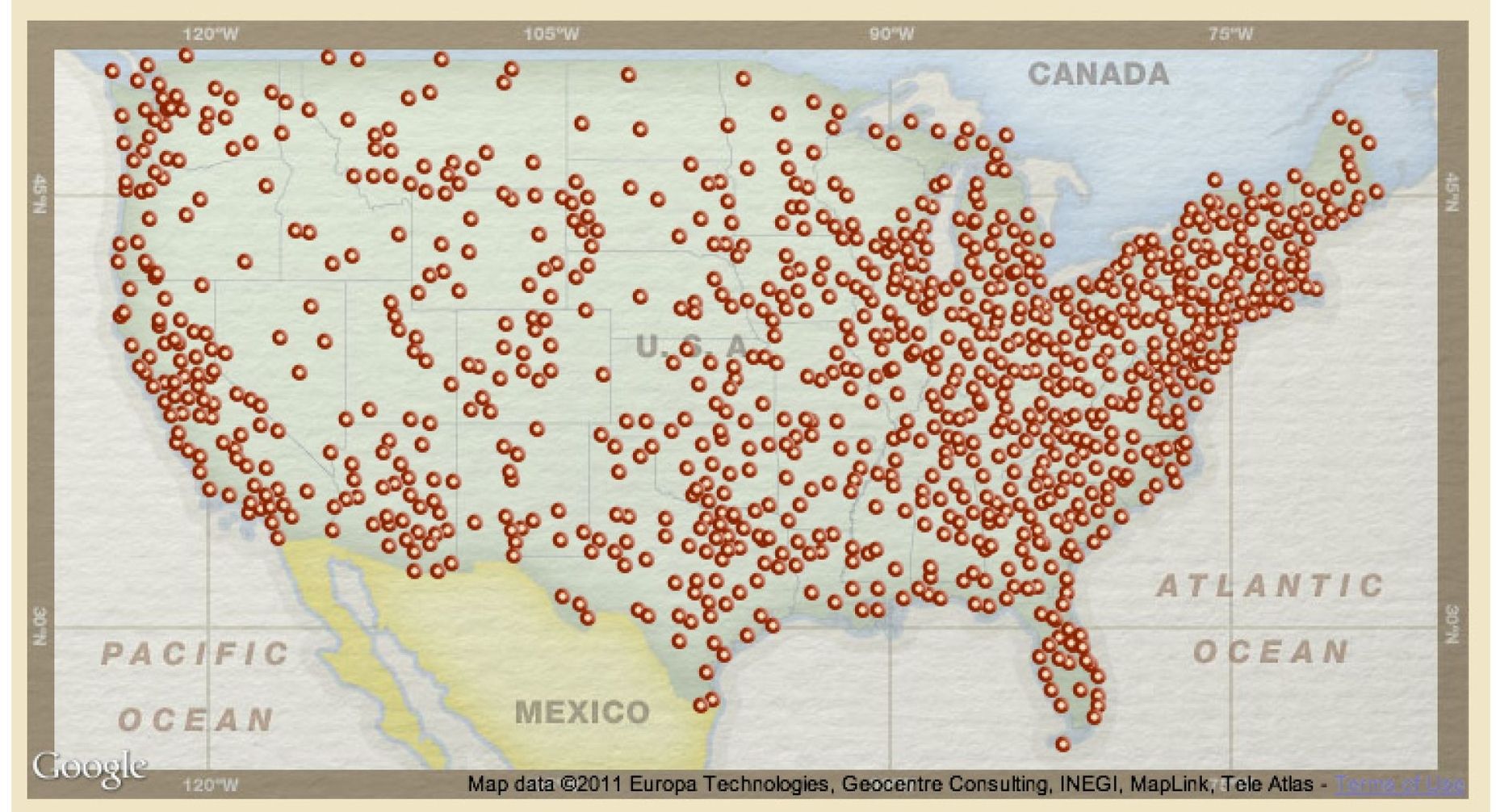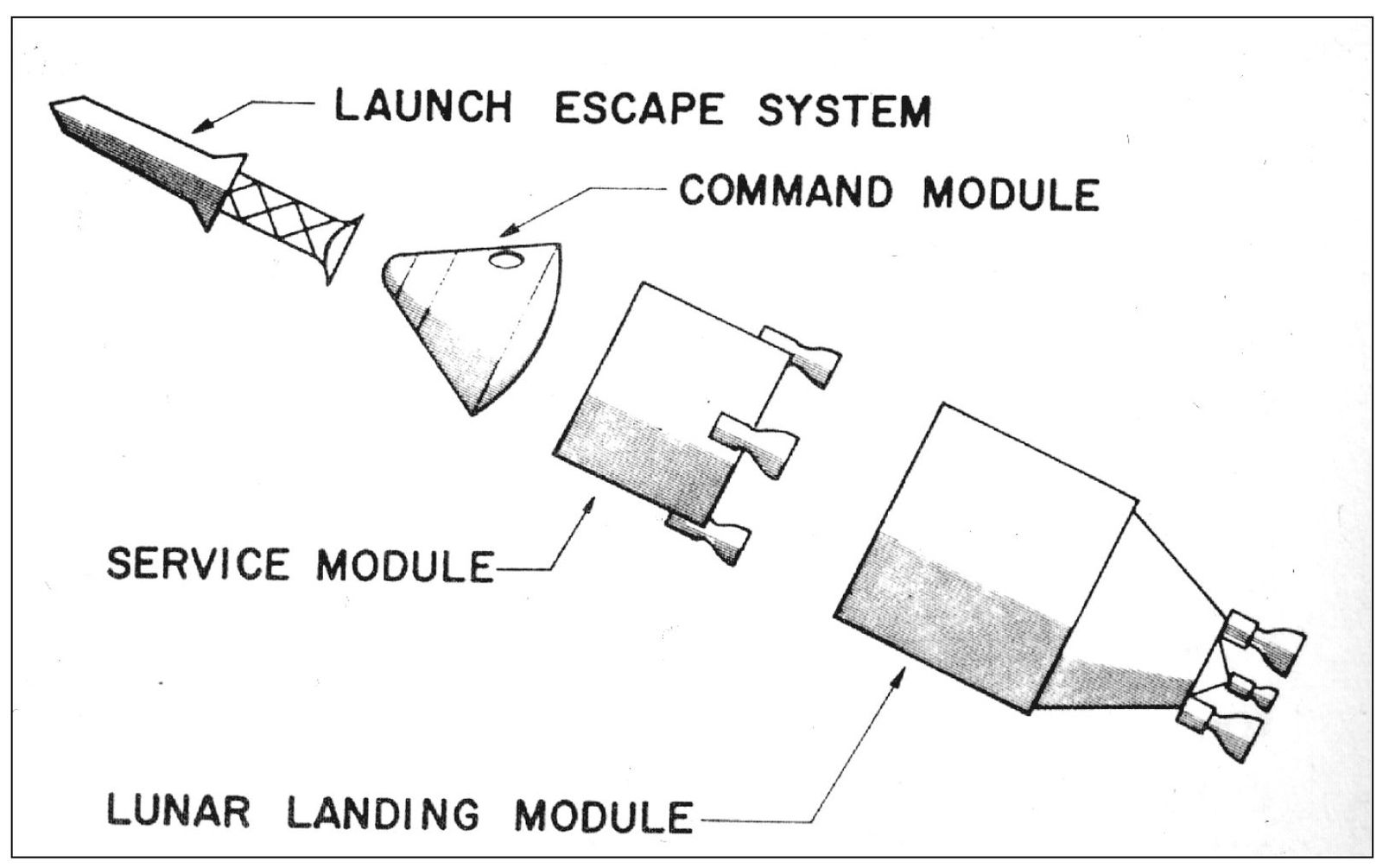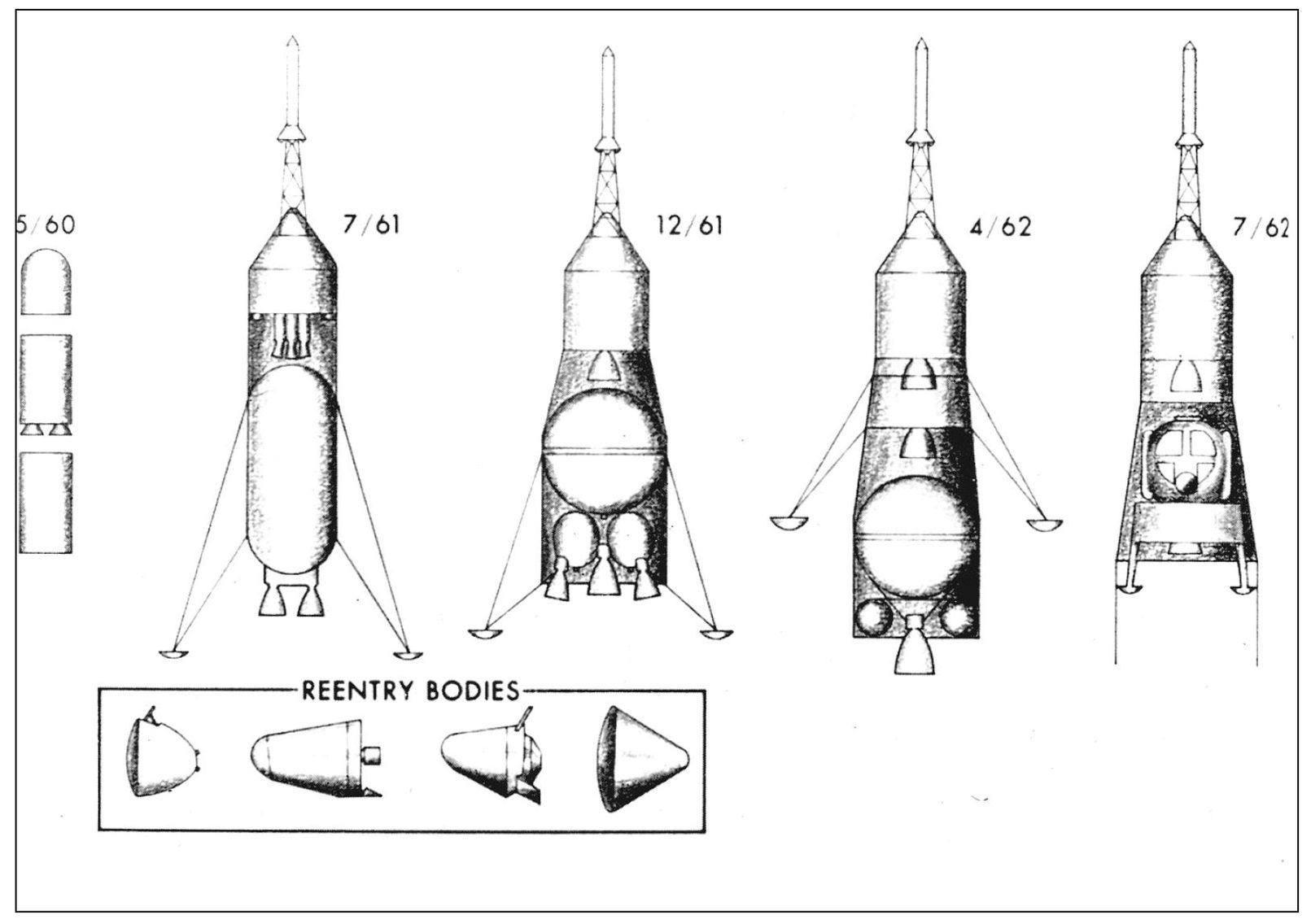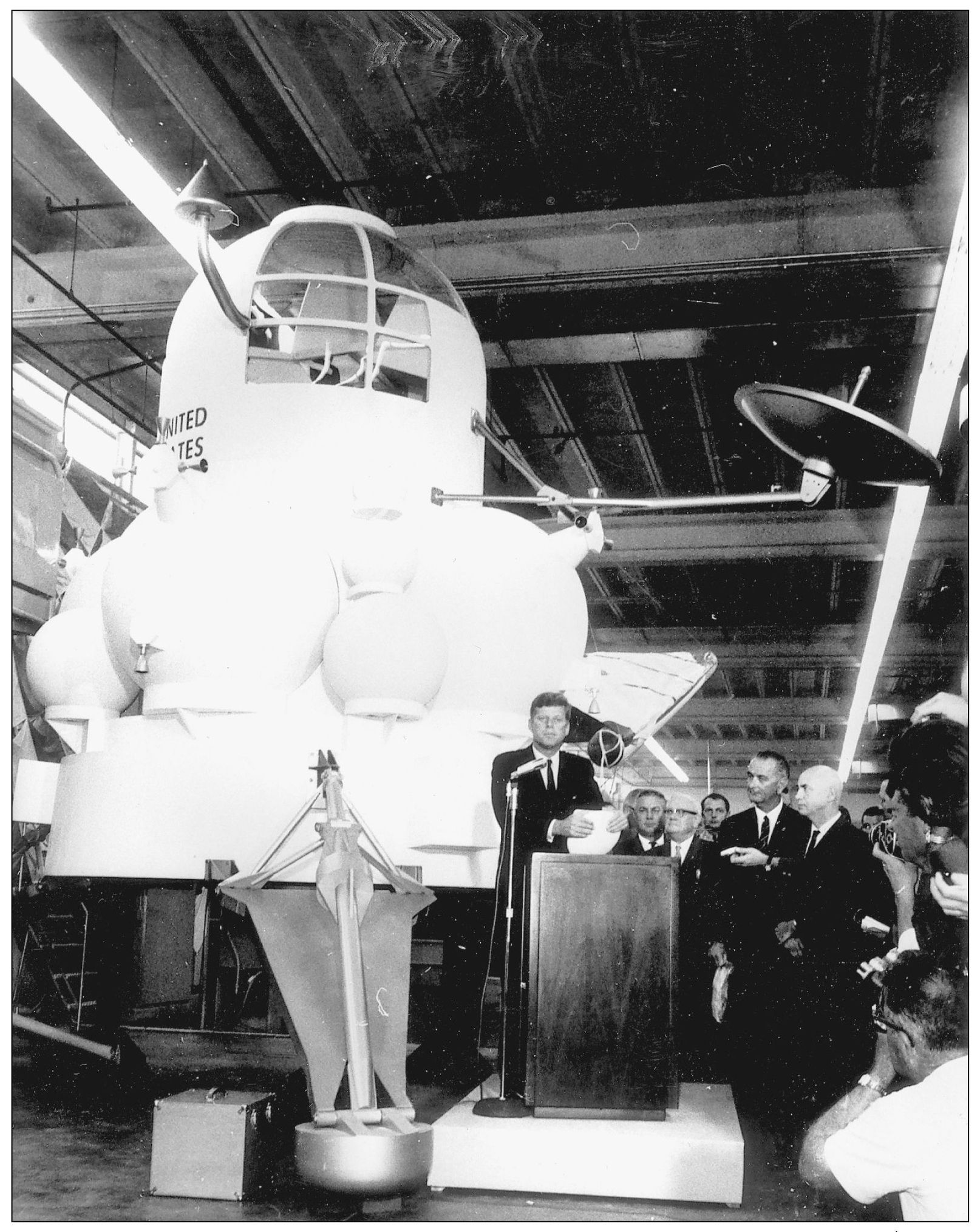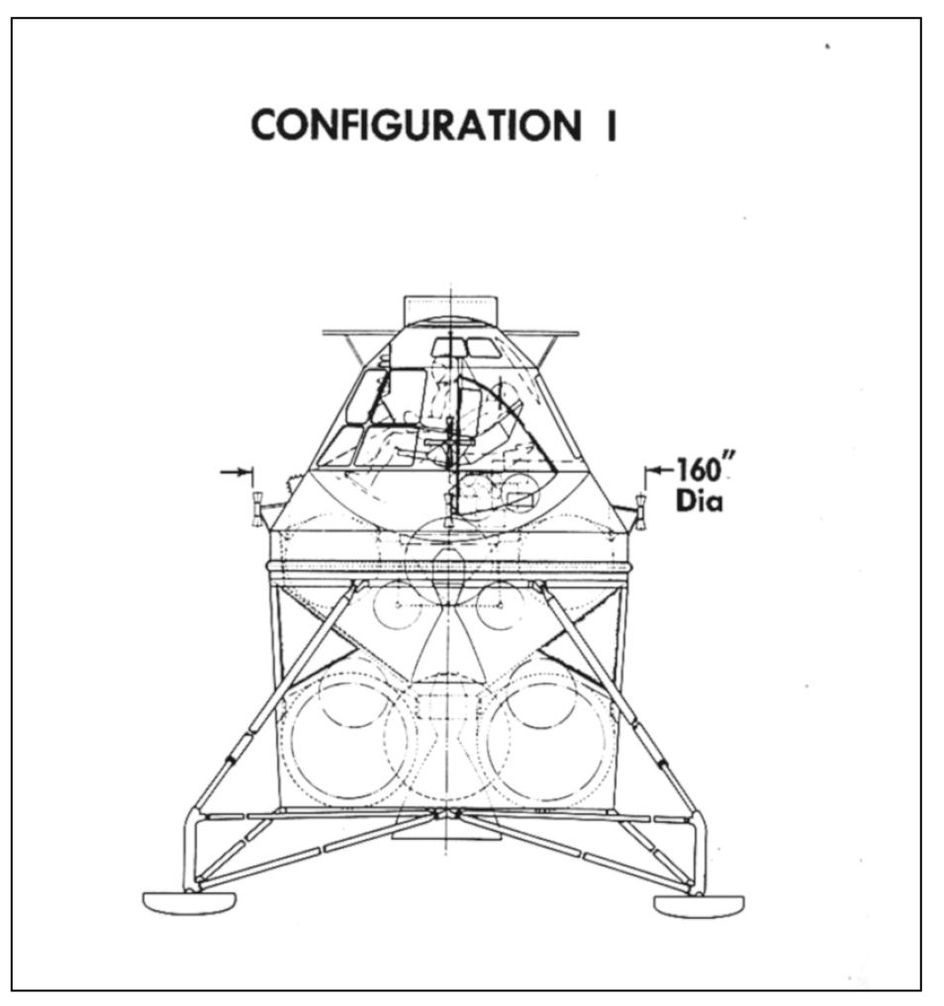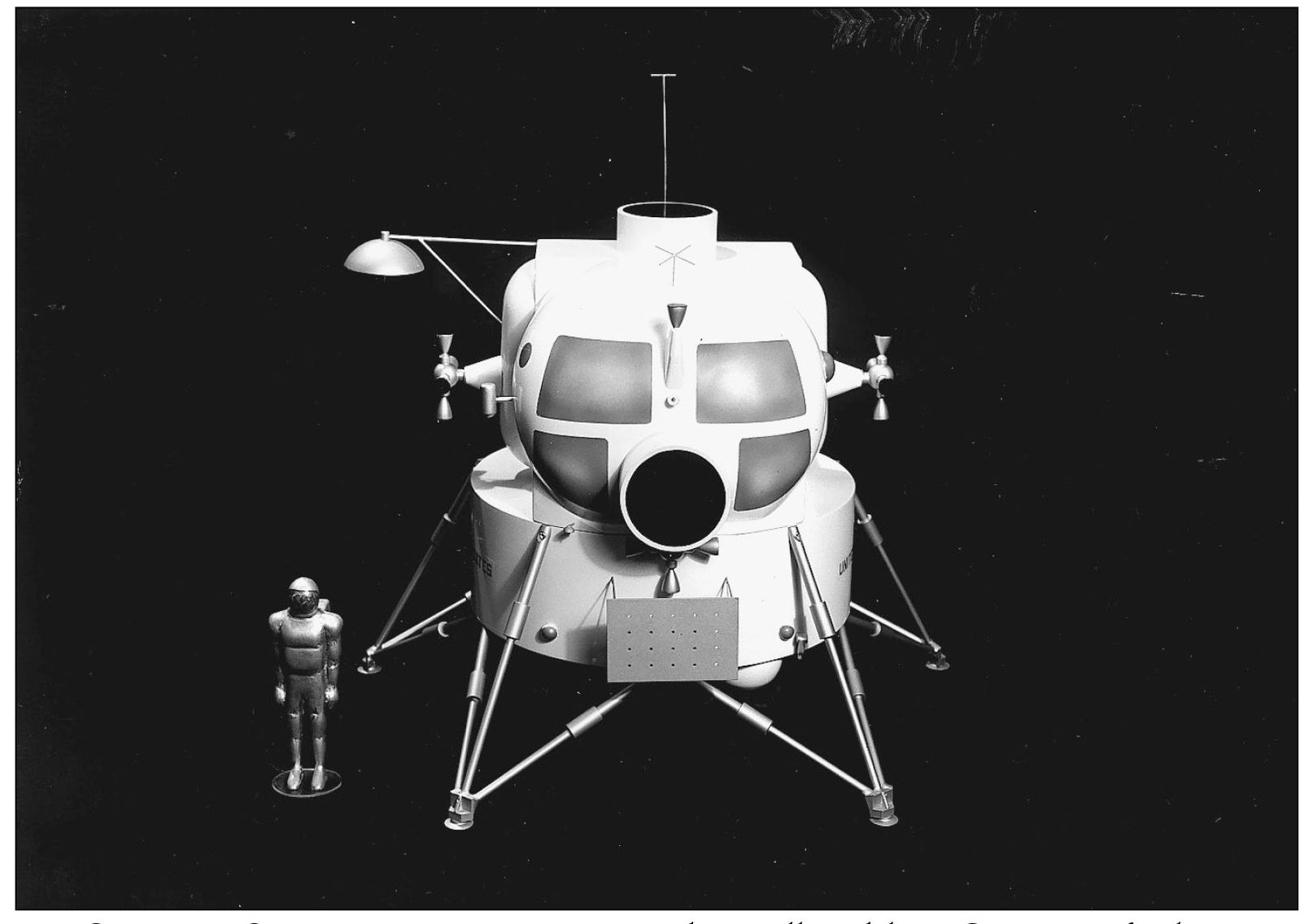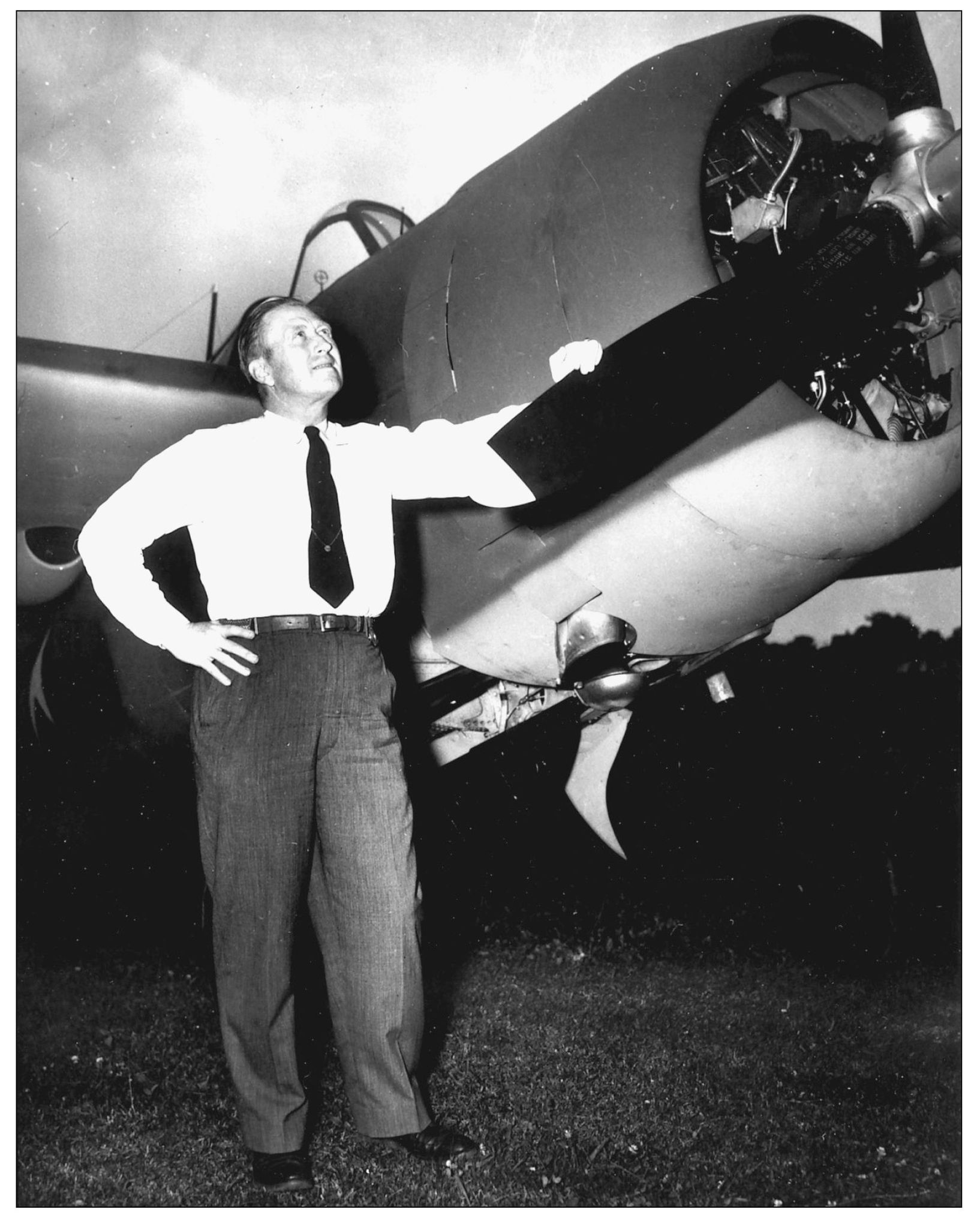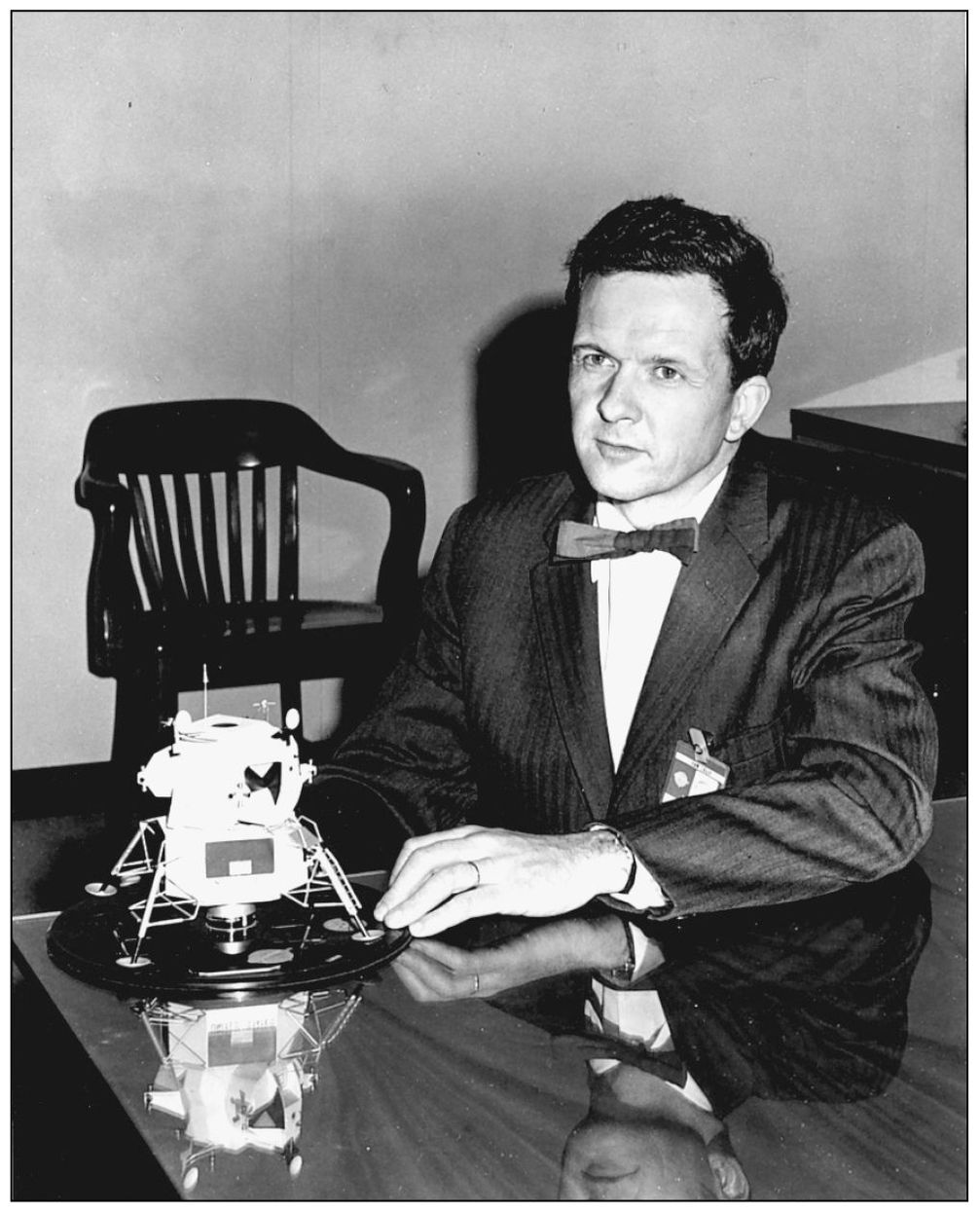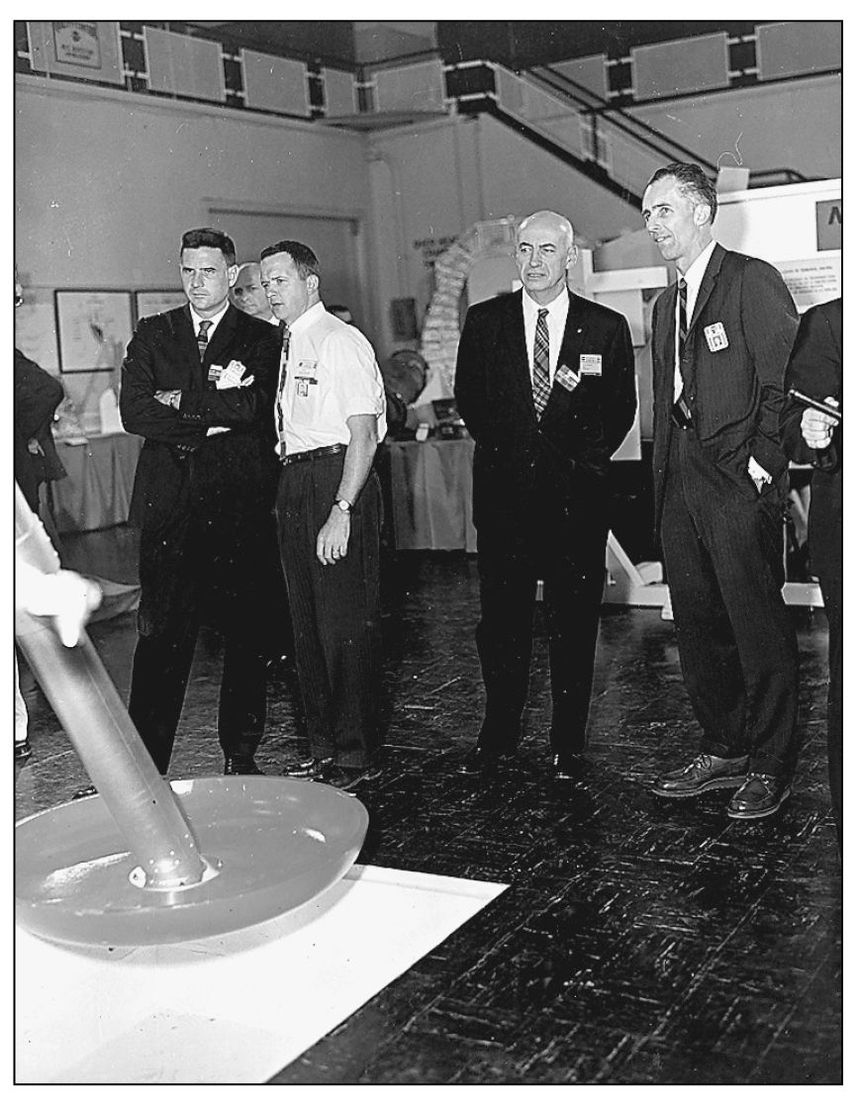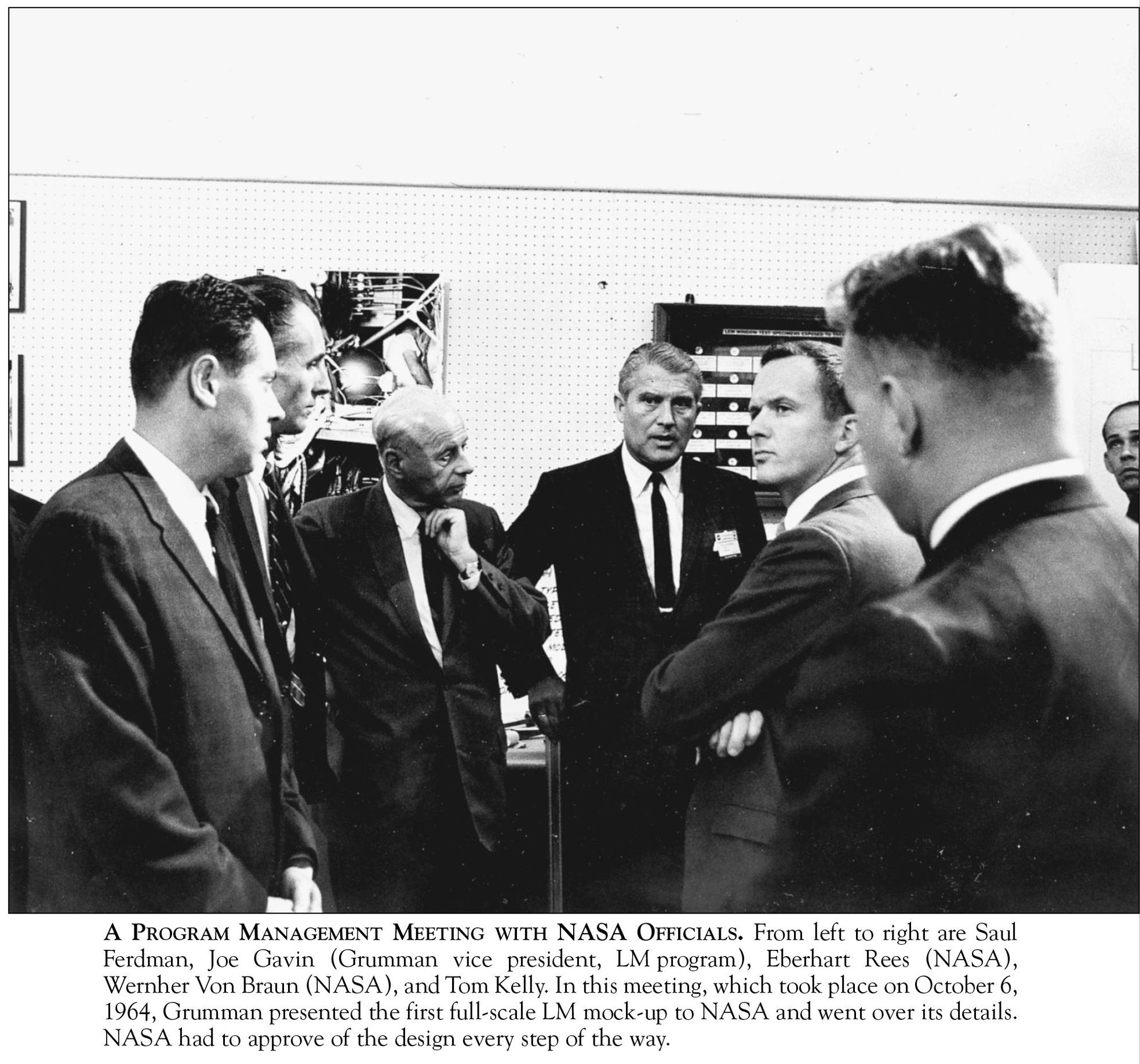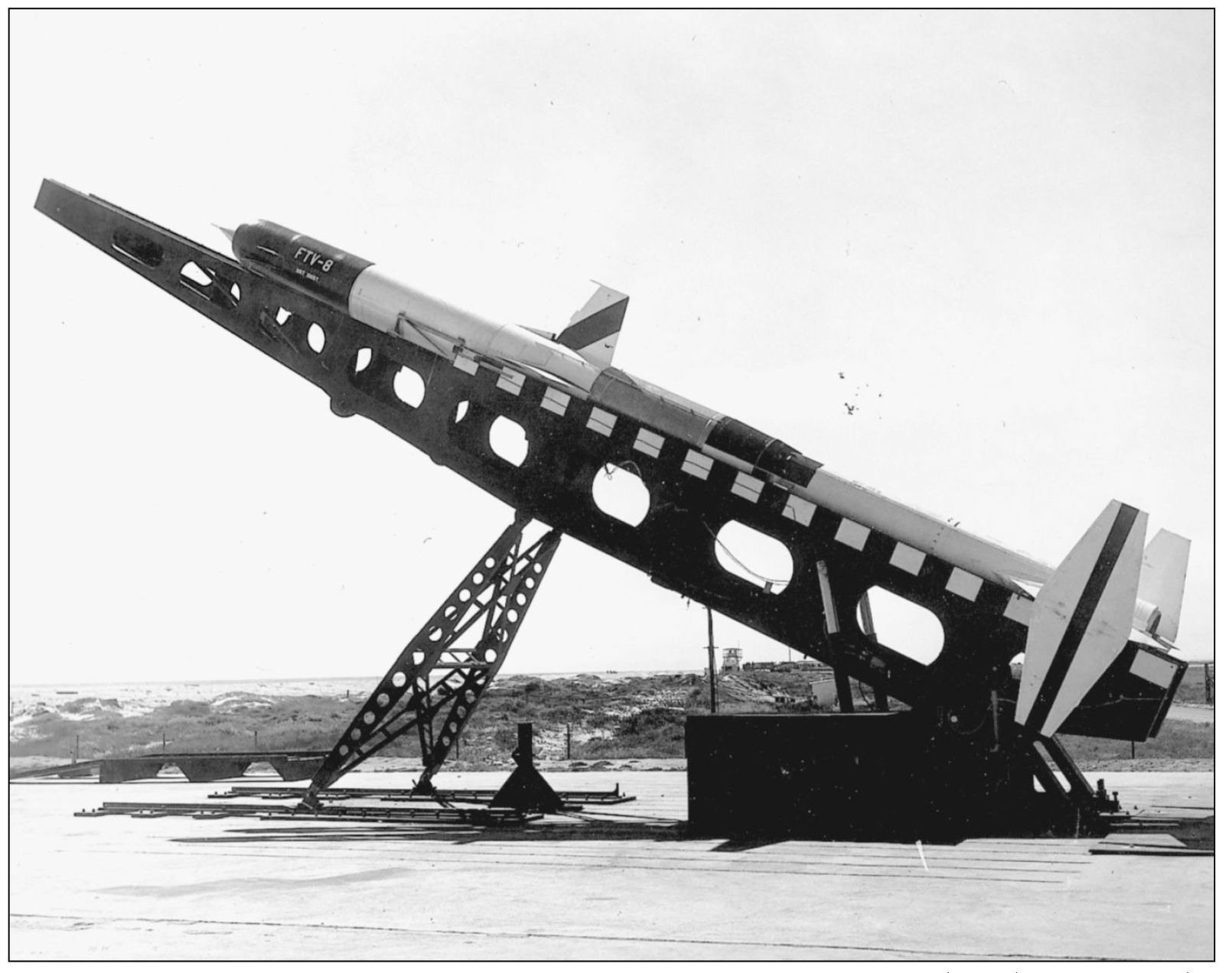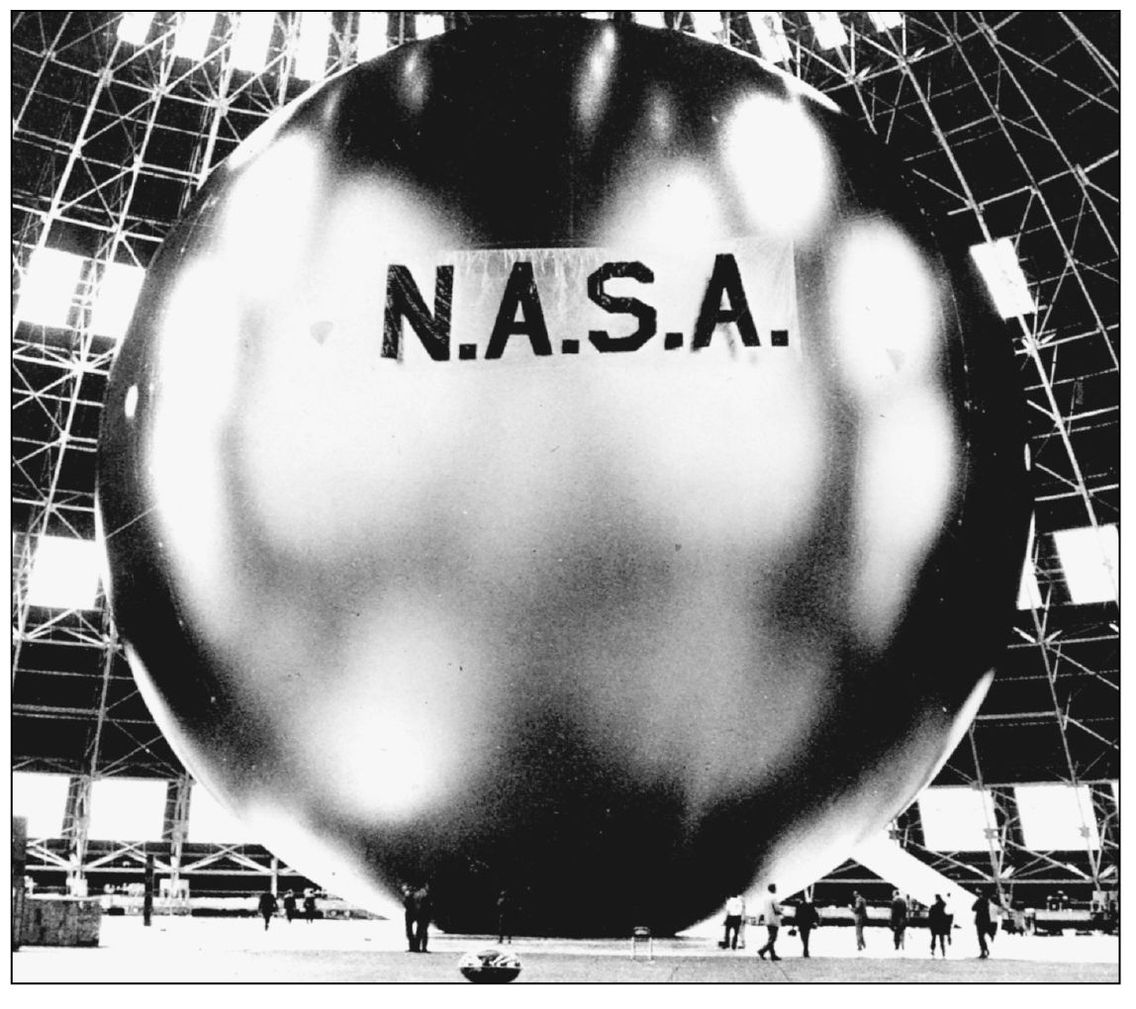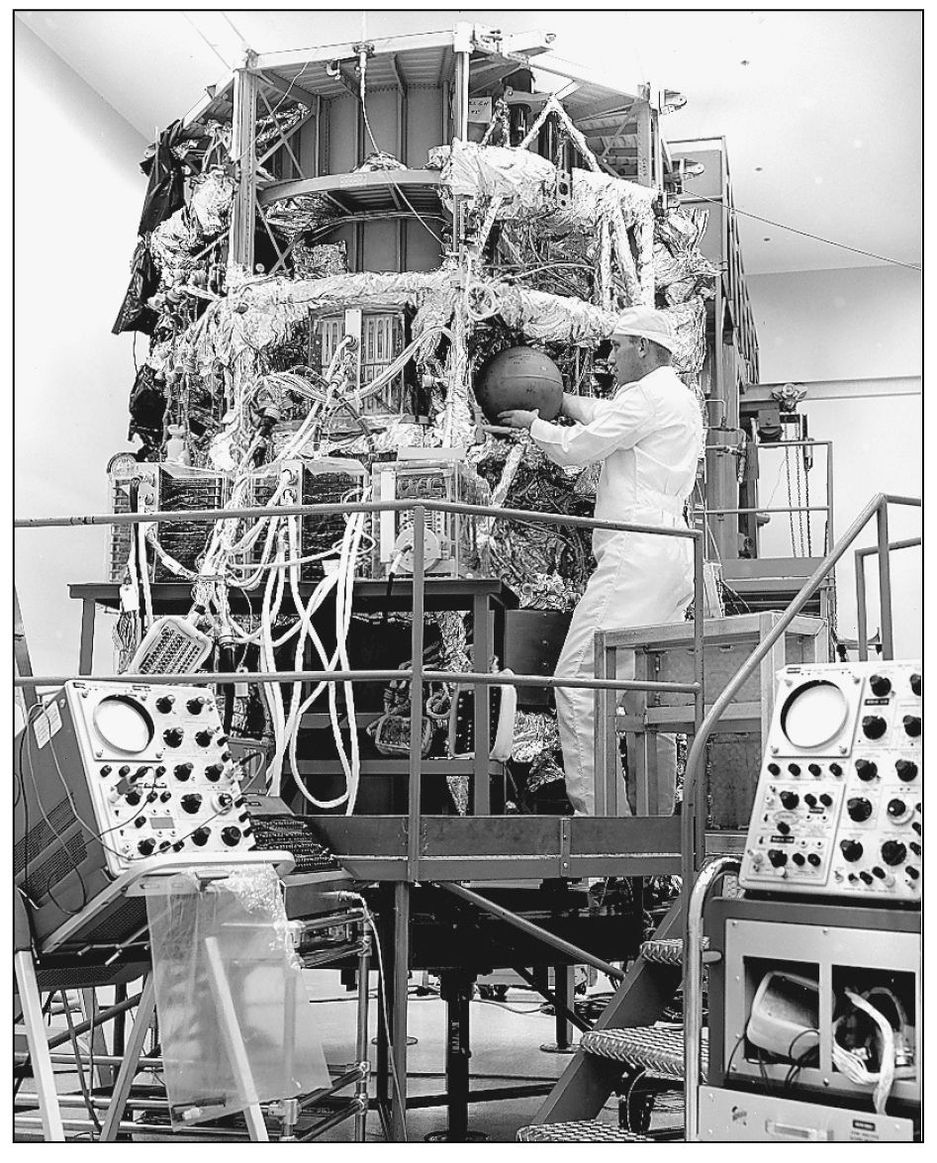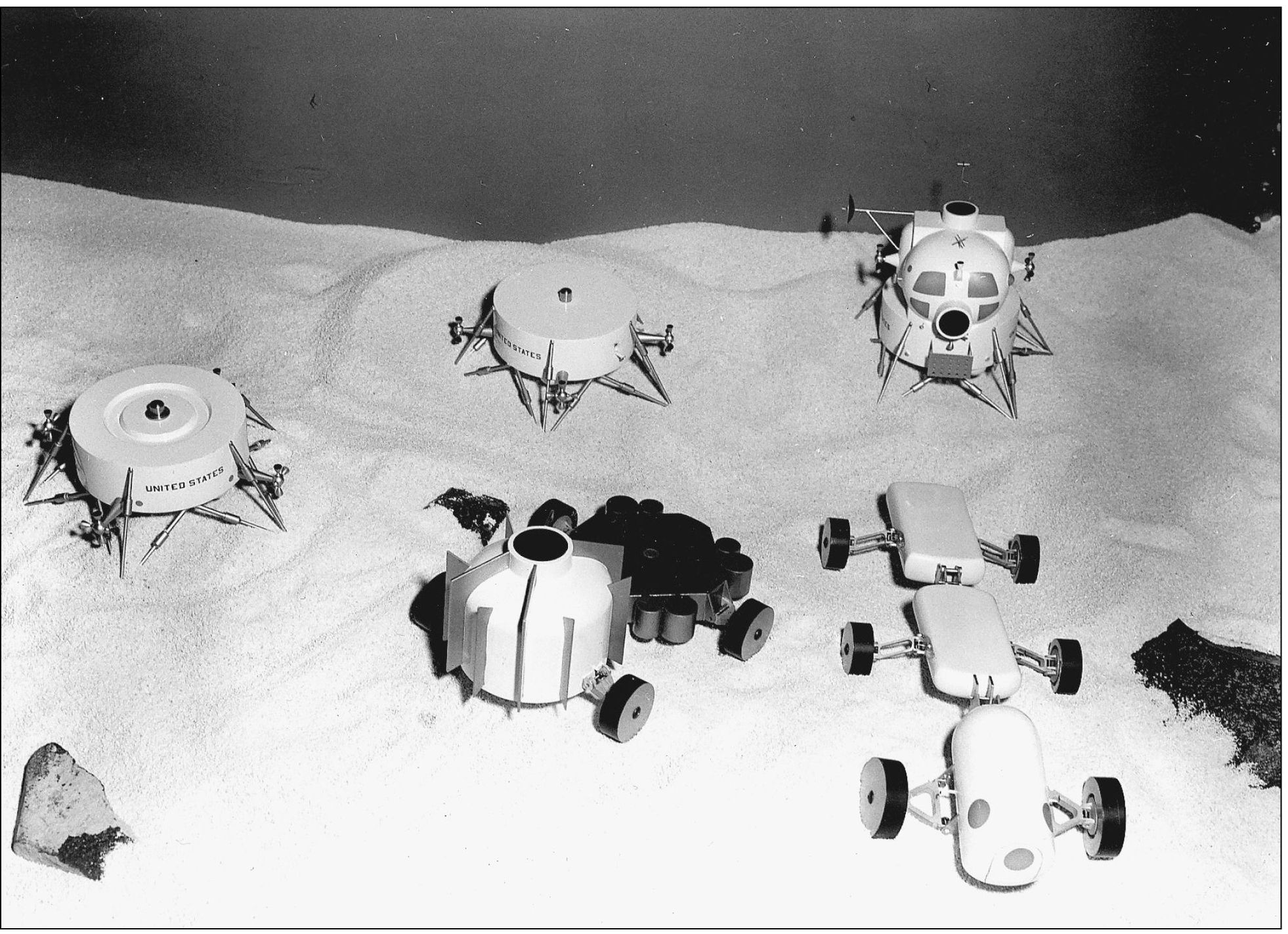One
DESIGNING A MOONSHIP
A NASA MOONSHIP CONCEPT, 1960. This early NASA concept features a moon lander that has flown directly to the moon, where it must land next to a tanker in order to refuel for the trip home.
A NASA MOONSHIP CONCEPT, 1961. This NASA direct landing concept would have required the heavy Apollo command module (CM) to land on the moon, with both a descent stage and an ascent stage below it.
THE NASA MOONSHIP CONCEPT EVOLVES, 19611962. From left to right are the steps by which the moonship concept evolved: from a single vehicle that went from the earth to the moon, to two separate, specialized vehicles, one of which never lands on the moon.
PRES. JOHN F. KENNEDY IN FRONT OF THE NASA LUNAR LANDER CONCEPT. This was NASAs first try at the design of a specialized lunar landing vehicle. Through the summer of 1962, eight aerospace companies fought to win the lunar landing vehicle contract. NASAs concept, seen here, was just a baseline. Contractors were encouraged to come up with other designs that could fulfill the mission.
A GRUMMAN LUNAR LANDER CONCEPT, SUMMER 1962. Grummans first design featured fixed landing gear, two seated astronauts, large glass windows, and two docking hatches. Its only resemblance to the final version was that it was a two-stage vehicle. It had a descent stage with its own engine, used to land on the moon, and an ascent stage with its own engine, used for returning to lunar orbit. Using the descent stage as the launch pad made the vehicle lighter, thus reducing the amount of power needed for the return trip to orbit.
THE GRUMMAN CONCEPT MODEL, FALL 1962. This small model was Grummans final concept of a lunar lander for the contract proposal. The spacecraft featured five fixed landing legs, two round docking hatches, large windows resembling helicopter windows, and no ladder. Based on the thoroughness and brilliance of Grummans engineering, in November 1962, NASA awarded the company a $1.61 billion contract to build 15 flight vehicles, 10 test vehicles, and 2 simulators. The race was on.
LEROY R. GRUMMAN, COMPANY FOUNDER AND CHIEF EXECUTIVE OFFICER. The Grumman Company of Bethpage, New York, had earned a solid reputation, primarily through being a supplier of naval aircraft. Grummans fighters were among the best of World War II. The company continued building front-line naval jet fighters through the 1950s. Although Grumman was new to the space program in 1962, so was everyone else. Leroy Grumman guided the company from building biplanes in the early 1930s to the development of the LM in the 1960s.
TOM KELLY, THE FATHER OF THE LUNAR MODULE, c . 1966. Tom Kelly was Grummans design genius. He oversaw the LM from the initial concept through the successful lunar landing. His LM design has since been referred to as elegant engineering. It was not pretty, but it was simple, strong, and purely functional.
TOM KELLY WITH NASA OFFICIALS, 1964. Tom Kelly (second from the left) explains the complexities of the folding LM landing gear. Listening are, from left to right, Dr. Joseph Shea (NASA), Bob Gilruth (NASA), and Joe Gavin (Grumman vice president, LM program).
A PROGRAM MANAGEMENT MEETING WITH NASA OFFICIALS. From left to right are Saul Ferdman, Joe Gavin (Grumman vice president, LM program), Eberhart Rees (NASA)? Werher Von Braun (NASA), and Tom Kelly. In this meeting, which took place on October 6, 1964, Grumman presented the first full-scale LM mock-up to NASA and went over its details. NASA had to approve of the design every step of the way.
A GRUMMAN RIGEL MISSILE, c. 1952. Grummans first experience with rockets was on the navys Rigel program in the 1950s. This was one of the earliest American ramjet missiles; it led to the development of later submarine-launched missiles.
A NASA ECHO SATELLITE TEST, c. 1960. Grummans first involvement with NASA came when the company won the contract to build the launch adapter and canister for the Echo satellite. Echo was NASAs first communications satellite. Deployed from its canister and inflated in space, it was a passive relay that bounced signals.
A NASA-GRUMMAN OAO SATELLITE, c. 1966. Grummans first spacecraft was the Orbiting Astronomical Observatory, which was NASAs first space telescope. Two of these telescopes operated for many years, providing the best deep-space photographs to date. This program provided Grumman with its first clean room construction experience.

